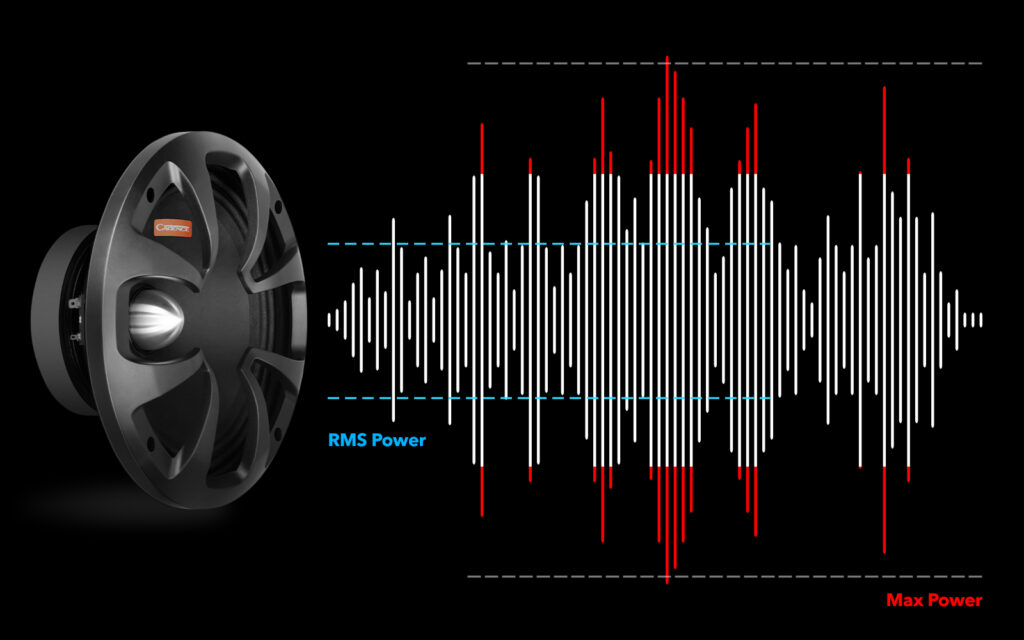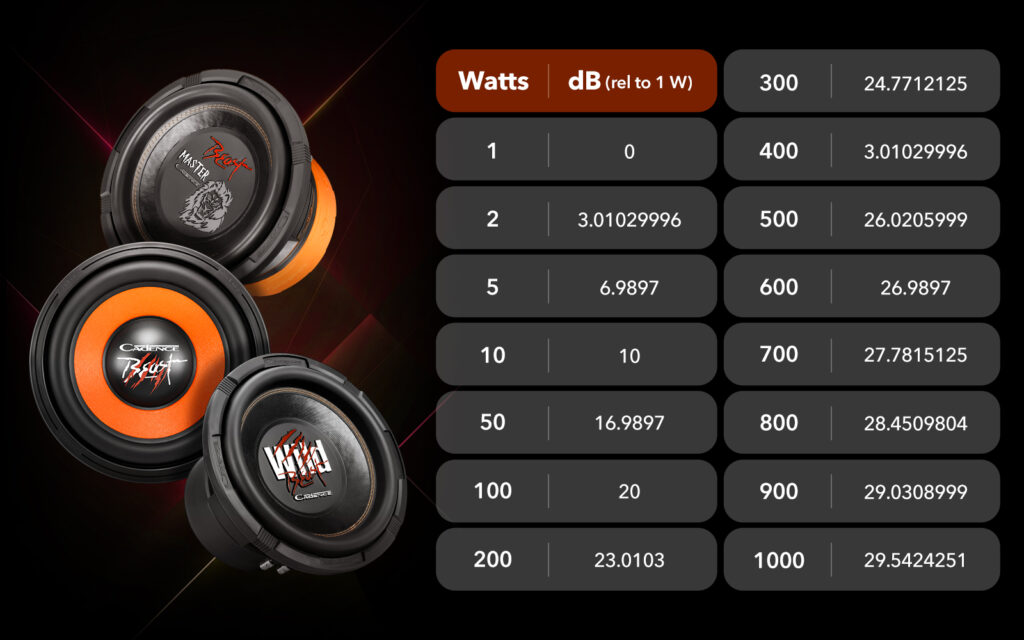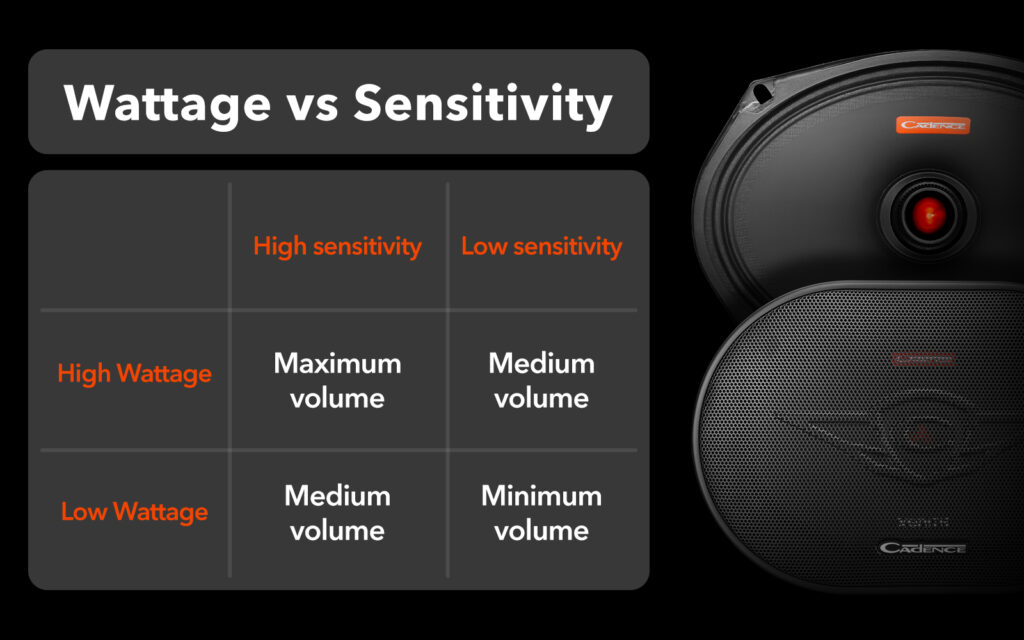<main menu>
How many watts do car speakers need? You just need sensitivity.
The myth of speaker wattage
It is a mystery for many people about the question of speaker wattage. We will clarify all these rumors and errors.
First of all, speakers are passive devices and won’t produce power. How loud the speaker is playing depends on the amplifier’s input. But we still find a minimum and maximum wattage recommendation on speakers specifications which are RMS watts and Maximum watts.
The features of RMS
RMS(Root mean square) represents the continuous output of the amplifier that could be afforded by speakers and should be continuous for at least 8 hours without causing any damage to the speakers.
Generally, it is configured with RMS 10~15W for each 6.5” or less car speaker. Mostly, RMS 30~50W is known as a good quality car speaker. It is difficult to design as RMS 75W or above. That means so many RMS 100~500W car speakers are exaggerated in audio marketing. It is grossly inflated and meaningless!
The features of Maximum watts
Watts means the speakers can withstand the maximum power of the amplifier in a “short time”(maybe 1 min, the 30s, 5s, or even 1s), so watts don’t have any recognized data. That’s why the “watts” of the speaker doesn’t have the value of reference.
Most of the brands multiply RMS watts by 5~8 times and mark this value as Maximum watts even if the speaker burned in 1s. It’s undoubtedly a tricky and meaningless value, so we just need RMS.

Tips for speaker & amplifier collocation
After understanding the truth about the speaker watts, we know how to collocate the speaker and amplifier. As RMS watts are good reference data when we choose an amplifier. The wattage of the amplifier is about 1.2~1.5 times the speaker’s RMS watts, for example, a 50W speaker can play with a 60~80W amplifier.
So we don’t have to worry if the amplifier wattage is larger than the speakers. But we have to be concerned that the amplifier wattage is too small which will cause damage to the “clipping distortion”. (We will discuss clipping distortion in the future.)

Sensitivity is the main role
The sensitivity of the speaker is more important than the speaker’s watts. It converts the speaker’s electrical energy into sound energy. The higher sensitivity, the greater volume.
dB is the unit of sensitivity. The formula of the speaker volume and amplifier watts is:
amplifier watts = 10dB/10
For example, Speakers need to increase the amplifier watts to 100.3=1.9953 (about 2 times) when increasing 3dB sensitivity; When the speakers want to increase 10dB, the amplifier needs to increase 101W by 10 times.

In fact, below 85 dB is low sensitivity, 86~90 dB is medium sensitivity, and above 91 dB is high sensitivity. These values represent the higher sensitivity, the louder speaker needs less wattage, so the wattage demand for the amplifier is also smaller.
For example, a 75W speaker with 93dB/W sensitivity will output as much volume as a 150W speaker with 90dB/W sensitivity, even though the wattage difference between 75W and 150W is twice as large.

There are many tips to choose the right car audio collocation, such as impedance, amplifier, sound splitter, etc. Let’s discuss these in the next topic.
Do you like this sharing? Cadence Sound offers more than audio products, contact us if you have any ideas about car audio.

